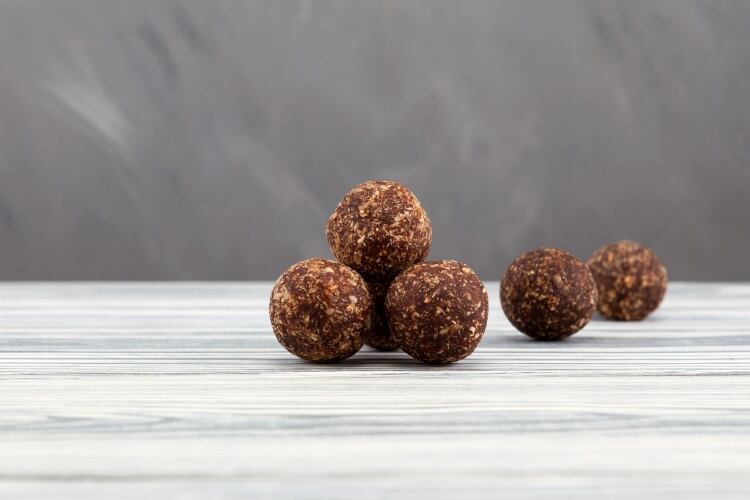Today’s protein consumers are demanding protein alternatives and attractive sensorial experiences. But with existing obstacles revolving around how to achieve favourable volume, texture and machinability to meet consumer expectations, protein has yet to reach mega-trend status.
However, with the adoption of new processes and product developments, the question now is whether it will signify a change for protein in 2023.
Alternatives get mainstream appeal

Proteins remain a critical ingredient in the global food industry. With the world accelerating toward innovative and sustainable eating, there has been a shift in demand for alternative protein sources.
“Global consumers have become increasingly aware of what they eat and how it impacts their health, which has raised questions about artificial ingredients and harmful additives,” said Taly Nechushtan, CEO of chickpea protein platform InnovoPro.
The alternative protein market emerged in direct response to these concerns and provides appealing product solutions in the bakery and snack categories.
“Food industry players must understand the evolving market dynamics and capitalise on opportunities that arise through product innovation,” added Alan Marson, director of PulseON Foods, formed in 2021 by the Quadram Institute and New Food Innovation to support the commercialisation of a unique, whole-cell pulse flour.
Gaining market knowledge is cited as key to staying ahead of the alternatives competition, said Marson, noting “consumers are hungry for new products with unique textures, flavours, and functionalities.
“By leveraging this burgeoning trend, companies will stay competitive and demonstrate their commitment to sustainability.”
High protein benefits
Evolving consumer behaviour has had a cascading effect on a number of food and snacks categories. Recently, it has led to a rise in new product launches in the baking segment.
Health-conscious consumers turn to bakery products with high protein levels to offer more nutritionally balanced options. Plant proteins with high digestibility and strong amino acid profiles are also popular choices for the enrichment of bakery and snacks, and today are dominating manufacturers’ new product development (NPD) plans. InnovoPro, for example, has launched a fully digestible protein, CP-Pro70, which contains amino acids at levels that meet or exceed adult nutritional requirements, along with fibres that promote a healthy microbiome.
Besides health benefits, taste is ultimately what determines the repeated purchase of a plant-based product.
“This is especially true in the baked goods and snacks segment where indulgence and richness of taste are crucial,” said Nechushtan.
It’s certainly the consumer who presents the baker with the ultimate challenge when formulating products with higher protein alternative flours.
“They are seeking out new and innovative ways to eat healthier and add more protein to their diet but aren’t looking to accept any sort of trade-off when it comes to texture or product quality,” said Songwei Wu, staff scientist of Food and Beverages at Innophos, which specialises in the development of essential ingredients, chelated minerals and innovative specialty phosphates.
The protein consumer

According to Innova, consumer behaviour has been the main driver behind the rise in protein-packed baked goods, with more than a third of dieting Americans now reporting a high protein focus in their diets.
According to Stephen Charles Lincoln, founder of The Protein Bakery, today’s consumer is “a more educated customer”, which is impacting the rise of protein in the bakery and snacks sectors.
The New York, US-based bakery was born in 1999 and became one of the first proponents of the concept of high protein baked goods. More than two decades of running the bakery has enabled Lincoln to build up a wealth of consumer insight, especially as protein demands vary from consumer to consumer – which presents manufacturers with both challenges and opportunities. Some consumers want more protein in every meal, others are focused on maintaining muscle mass and understand adding protein can make it taste better and fill them up faster and for longer, while others want calories and real food that is nutritious.
“People are reading nutritional values more than ever,” said Lincoln. As a result, consumers are open to limiting or restricting certain items from their diet to get results either for better health or better fuel.
“Especially since the pandemic people want to make better, healthier choices,” he added.
Consumers are looking for options with the added functional benefit of more protein while still expecting a similar sensorial experience to traditional baked goods.
Overcoming functional, intolerance and production challenges
Manufacturers are faced with volume, texture and machinability obstacles when producing protein-rich baked goods and snacks, particularly in the alternatives space.
Maintaining both volume and texture when working with alternative flours remains an ongoing challenge for bakers looking to formulate high protein products. Struggles in achieving ideal volume and texture relate directly to the hydration challenge that bakers face with many of these protein-rich ingredients. The proteins compete with other ingredients for water, which can result in inconsistent water absorption and thus inconsistent volume and texture of finished products.
“Phosphates play a critical role in improving the volume and texture of high-protein, plant-based baked goods,” said Wu. Many plant-based proteins can negatively impact the density of finished baked products because they increase the viscosity of the batter, he added, limiting the ability to incorporate air.
Combined with the fact that these proteins require a significant amount of water, the phenomenon can lead to a much thicker batter and denser end product.
“Phosphates help reverse this trend, reducing batter viscosity and bringing it back to a similar level as traditional flour-based baked goods while also positively influencing the water holding capacity of the proteins.”
Emerging innovation is also set to appeal to intolerances and preferences.
“Whey protein is the most easily absorbed into the body, but not all people can deal with whey protein,” added Lincoln.
Machinability can also be negatively impacted by high-protein ingredients.
According to Wu, this is “due to the fact that replacing traditional flours with plant-based protein-rich alternatives can have a considerable effect on the rheological properties of the batter.” When added proteins impact the viscoelastic behaviour of batter, it can considerably impact the way the batter moves through machinery designed for a different batter composition.
From a machinability perspective, phosphates can help batter perform better. In a similar way to how viscoelastic works in traditional flour-based batter, phosphates can help avoid any issues related to decreased process efficiency, noted Wu.
Protein predictions and projections for 2023

Consumers are looking for healthier, more sustainable options across bakeries and snacks.
“We expect to see more and more protein-enriched launches in these categories from major CPGs and smaller companies,” said Nechushtan.
The sector is also seeing growth in baking ingredients and mixes that are plant-based, vegan and fortified with alternative protein.
“Focusing on bakery, the market still lacks plant-based alternative solutions that maintain the same shape, texture and taste that egg white provides,” he added.
From an innovation perspective, the protein trend has already expanded beyond some of the early segments of the baking space like seeded bread, muffins and protein-rich pancakes into more indulgent segments like cupcakes and cakes
“As a result, this evolution of the baking category is set to continue as more and more new indulgent products should hit the market in 2023,” said Wu.
Examples of protein-rich baked goods and snacks we can expect to see include brownies, cookies and single-serve desserts.
“Protein should see an uptick in 2023 as the trend of ‘higher-protein, better for you’ options continue to impact the NPD strategies of bakers and snack food manufacturers,” added Wu. Consumer demand will continue to drive NPD and innovation in this category as shoppers seek more indulgent options with greater functional benefits so they can enjoy healthier alternatives to long-favoured sweet and savoury baked goods.
“With more education, people will learn to eat more balanced and incorporate protein into their lives,” said Lincoln.
Amid the rise of protein in baked goods and snacks, in 2023, we can expect to see a range of innovations including bakery mixes, high protein plant-based snacks and egg-free pancake mixes and cakes. Whether new developments in the high protein and alternatives segments are enough to push protein into becoming a mega-status trend depends on how producers fare with tackling current functional and sensorial struggles.



